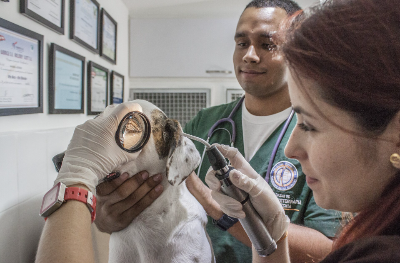The Average Cost of Dog Insurance
Pet insurance works similarly to home insurance.
You pay a monthly premium to keep your insurance active, and when an emergency happens, your insurance will reimburse you a certain percentage of your costs once you’ve reached a deductible amount. They can reimburse up to anywhere from 80% to 100% of the cost.
The average monthly premium for dog owners is $49.51, according to the North American Pet Health Insurance Association (NAPHIA). How much you pay, however, will differ based on your unique situation and which pet insurance company you go with. You can find monthly premiums as low as $6 and as high as $155.
What Does Dog Insurance Cover?
Pet insurance was created to cover the big, unexpected medical costs for your dog. For this reason, typical dog insurance will cover:
● Injuries like broken bones or ingestions
● Unexpected illnesses like cancer or hip dysplasia
● Prescriptions
● X-rays, blood tests, and other diagnostics
● Emergency room fees
● Surgery
Depending on what insurance plan you choose, some will also cover other medical treatments like chiropractic care, hospital boarding, and more.
What Does Dog Insurance Not Cover?
While pet insurance covers the major medical expenses your dog might have, it doesn’t typically cover regular wellness expenses. Traditional dog insurance companies don’t cover:
● Routine or wellness exam visits
● Preventative care
● Spay/neuter
● Vaccinations
● Pre-existing conditions
Pet insurance will not cover your expenses for your pet’s pre-existing condition, but you can still get pet insurance for pets that have these conditions. The insurance will just apply to other incurred expenses over time. In some cases, if a pre-existing condition is curable and your dog has gone a certain period without showing symptoms, your pet insurance will cover future developments with that condition.
What Affects the Cost of Dog Insurance?
As previously mentioned, your pet insurance monthly premium costs are dependent on a variety of factors. Each pet insurance provider will have a different policy and qualifying criteria, but in general, your monthly payment is decided by:
● Your dog’s size and breed
● Your dog’s age and their life expectancy
● Your location and the common health risks to your dog in that area
● The term and length of your insurance policy
● Your plan type
● Your deductible amount and reimbursement rates
● Your payout limits
Just like all insurance, a higher deductible means lower monthly premiums, as does a lower reimbursement rate. Your pet insurance is also likely to be lower the younger your dog is.







